All the way back on January 16th, 2014, in the first week of our program, we were able to visit the United Nations. The current Palais des Nations was built between 1929 and 1936 for the League of Nations. After World War II, the complex became the headquarters for the European office of the United Nations in 1946, quickly evolving into the largest center for multilateral diplomacy in the world. Today, Geneva's Palais des Nations hosts about 9,000 conferences and over 25,000 delegates each year. It is second largest nexus for United Nations operational activities after New York.
 |
| Grand Chamber, largest conference room |
On our tour, we were able to learn more about this fascinating history and see the works of art that each country donated to the United Nations upon gaining membership to the organization. We also were able to see and sit in the delegates' seats in both the Grand Chamber and the Human Rights Council Chamber. The Human Rights Council chamber is beautiful with the new ceiling, a gift from Spain and finished in 2008. It is called, "The Ocean" and made by Spanish abstract artist Miquel Barcelo. The ceiling first had to be reinforced so that it could handle the weight of the art to be installed. For the ceiling, Barcelo used 35 tons of paint! The whole project cost $23 million to boot. The concept for The Ocean and the multicolored stalactite forms are meant to represent a sea and a cave, in absolute and opposing union, where the each nation is unique, just like each individual stalactite, but together with the ebbs and flows of the water, they can move together in harmony. Barcelo has said that he found his inspiration "on a day of immense heat in the middle of the Sahel desert [where he saw] the mirage of an image of the world dripping toward the sky...flowing drop by drop." The ceiling is impressive from all angles, and I loved looking at its colors and forms.
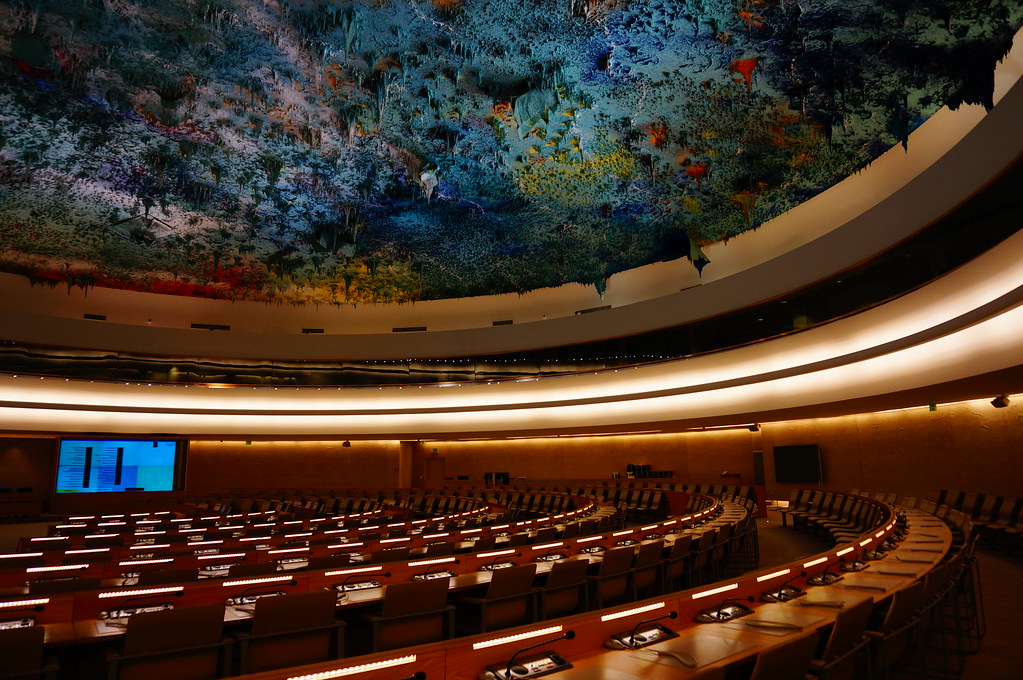 |
| So cool to be on the floor of the HRC! |
 |
| I could stare at this ceiling art all day, and this only one small section! |
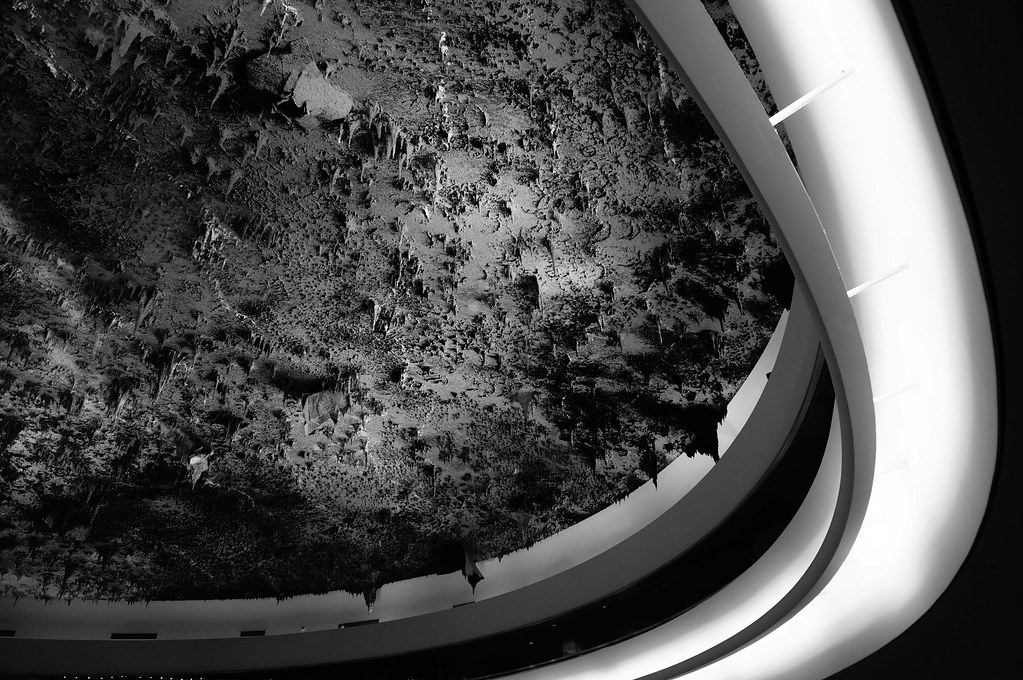 |
| It is even stunning in black and white. |
Out front, the United Nations also has another important large work of art. It is the Broken Chair by Swiss artist Daniel Berset. It is made of 5.5 tons of wood and stands 39 feet (12 meters) tall. The statue was made in 1997 for the NGO Handicap International. The broken leg on the chair is meant to symbolize the harm caused by land mines and cluster bombs and acts as a reminder in front of the Palais des Nations to governments to ban the use of these weapons.
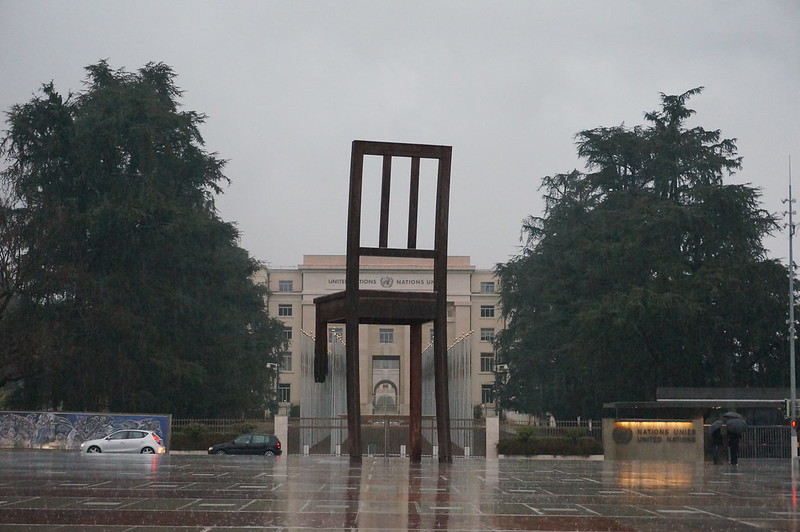 |
| Broken Chair in the rain |
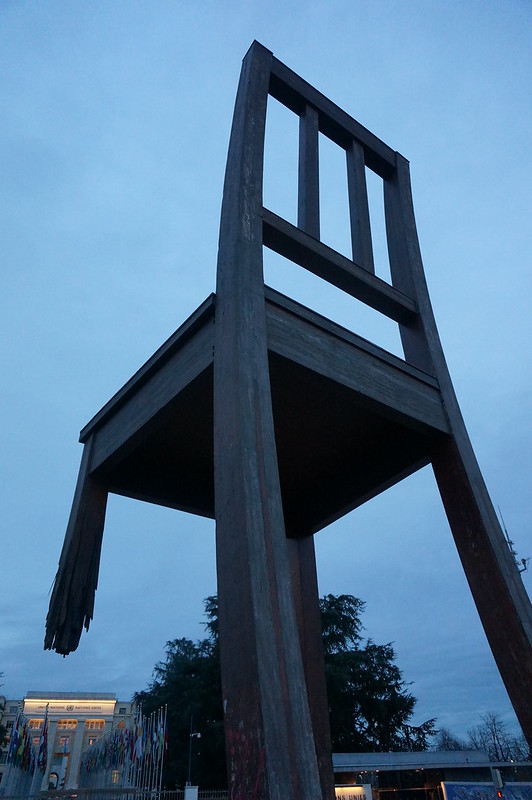 |
| Broken Chair at dusk |
Since our United Nations visit, I have returned to the Human Rights Council chamber several times to watch various sessions. One of the largest events in Geneva at the Human Rights Council are the Universal Periodic Reviews (UPRs). These are reviews conducted on each individual country by the Human Rights Council where the country must give a statement about the status of human rights in its country and then answer questions posed by the Council about its human rights record.
Sometimes, these kinds of events are frustrating to me because it is hard for me to see how this kind of dialogue of reading two minute, pre-drafted statements (that are already made available on record to the public) is at all interactive or likely to lead to improving the status of human rights on the ground in individual countries. However, unlike UN activities in New York, NGOs can participate in the Human Rights Council in Geneva. NGOs are able to ask questions and be present to record the responses given by national delegations to questions posed by the Council. Sometimes, the NGOs can then use these statements made in international forums such as the UPRs to gain political capital at home and hold the government accountable. In other examples, where progress on specific indicators can be tracked annually, this can also lead to improvements, albeit gradual, in human rights on the ground.
In case you are interested, you can watch one of the UPRs here:
When I first visited the United Nations in January, the flags had been taken down for maintenance on the grounds. Now the flags are finally up. After work one day, I was able to stop by with my camera and take some pictures of the flags at dusk as night fell.
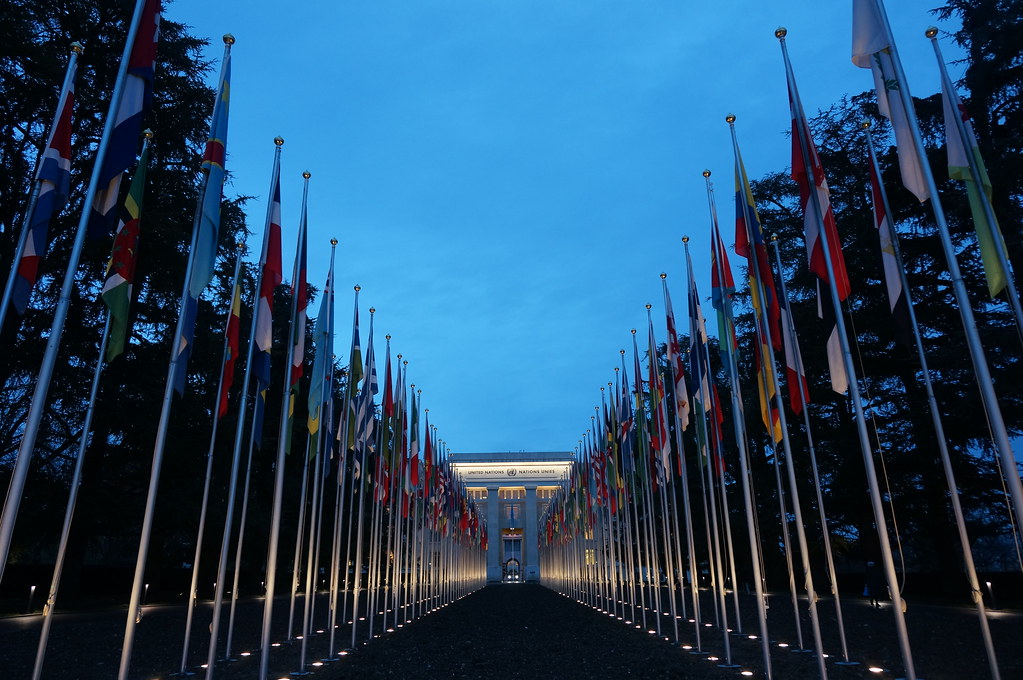 |
| Flags at Dusk |
Being able to actually experience some of the different types of events that take place at the United Nations has been a great experience in my internship here in Geneva. It is so cool to see things I read about first-hand and learn how the international system works. What a wonderful way to finish my last semester of law school.
 |
| Flags at Night |



 12:30 PM
12:30 PM
 J-Mad
J-Mad

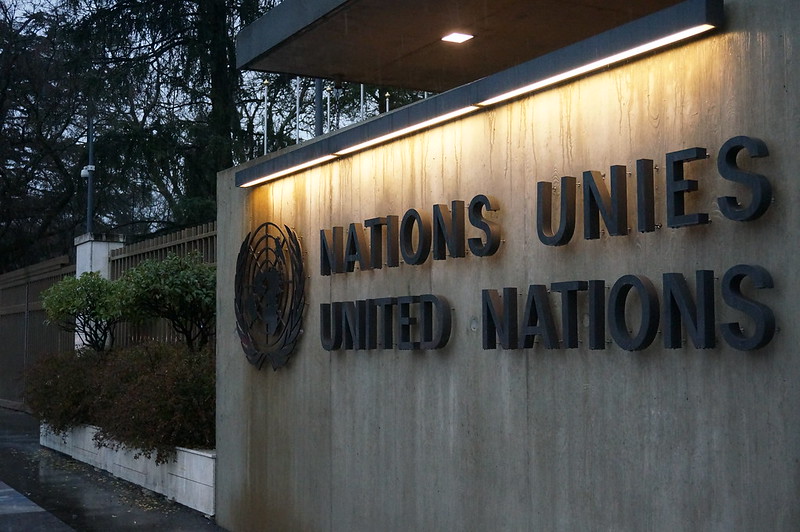
 Posted in:
Posted in: 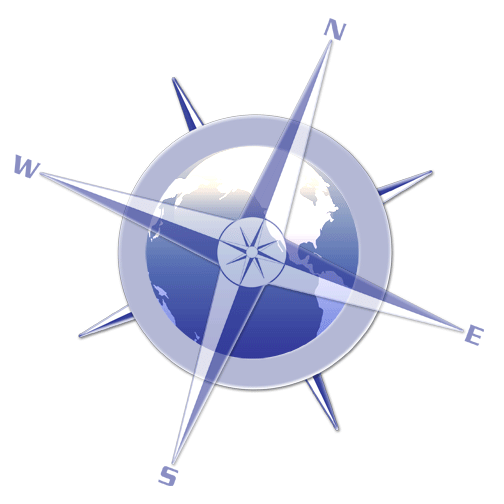

0 comments:
Post a Comment